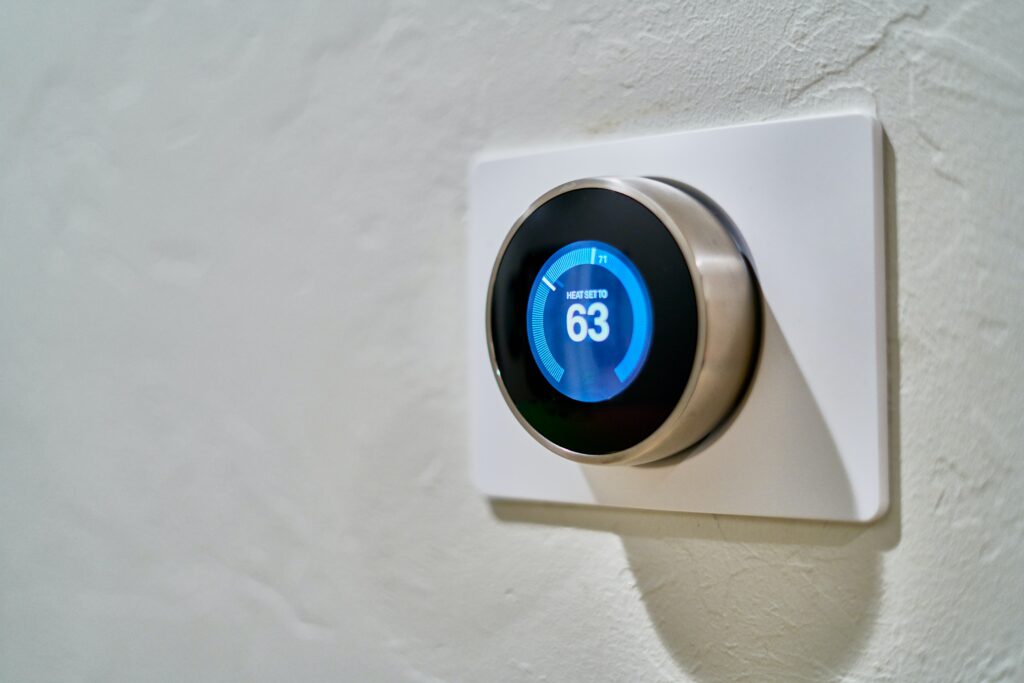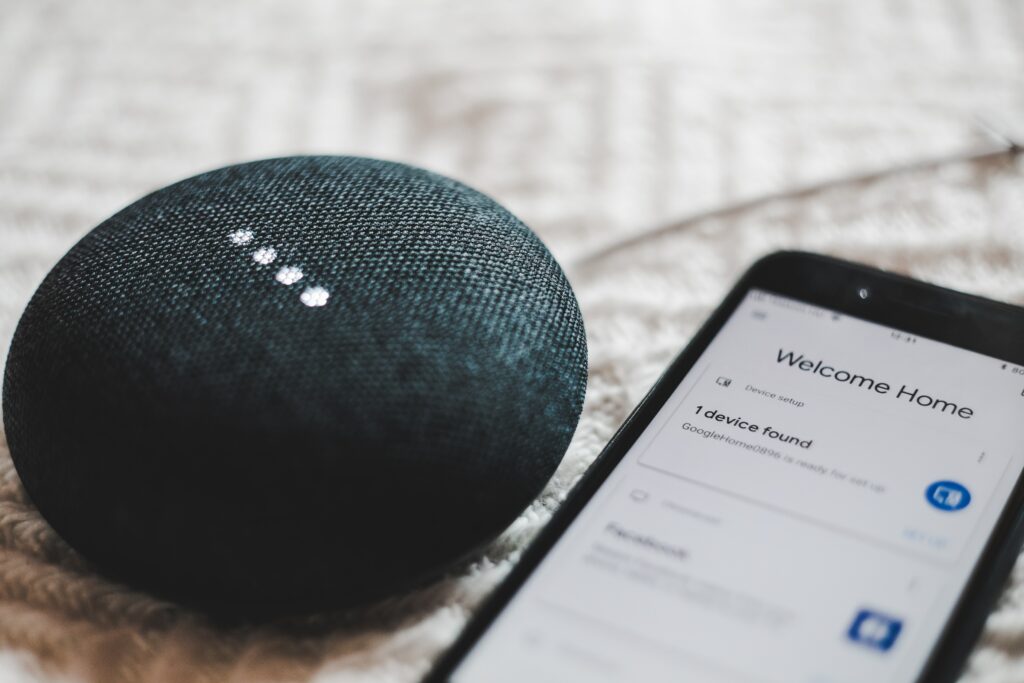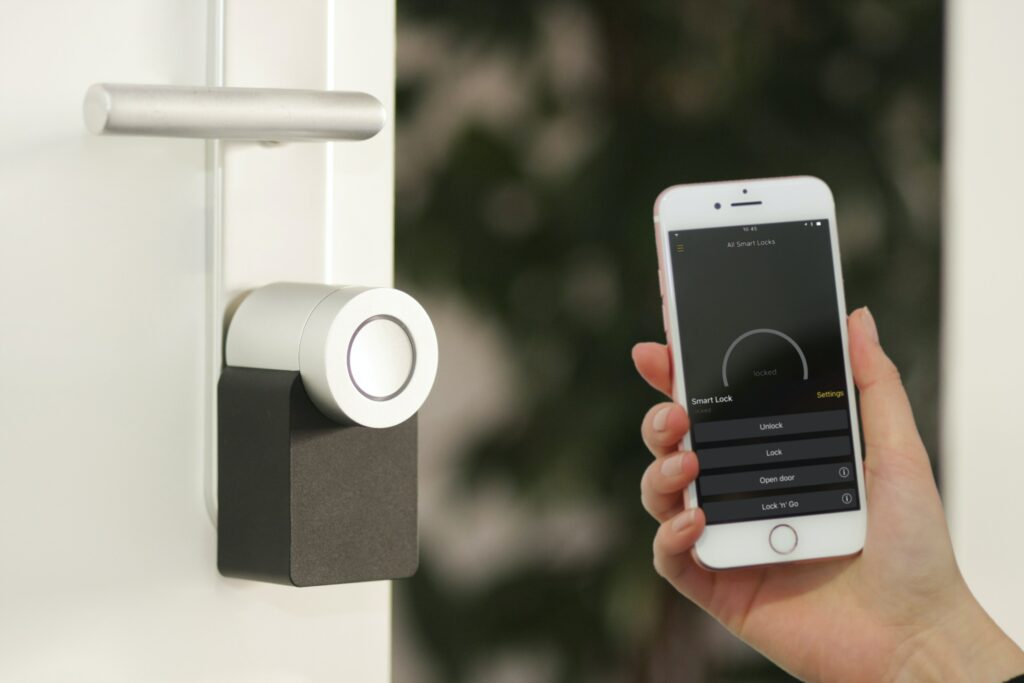In today’s modern world, the impact of sensors in our homes is undeniable. From detecting motion and adjusting lighting, to monitoring temperature and controlling appliances, sensors have revolutionized the way we interact with our living spaces. With the increasing integration of smart technology, our homes are becoming more intuitive and responsive to our needs. Sensor technology not only enhances our comfort and convenience, but also promotes energy efficiency and security. Let’s explore the fascinating world of sensor sensations and discover how they are shaping the future of modern homes.

1. Introduction
Welcome to Sensor Sensations: The Impact of Sensors in Modern Homes! In today’s world, technology has become an integral part of our lives, and it has revolutionized the way we live, work, and interact with our environment. One such advancement that has transformed the way we experience our homes is the development and integration of sensors. These smart devices enhance our comfort, security, and overall quality of life by providing valuable information and automating various tasks. In this article, we will explore the wide range of sensors available for modern homes, from security sensors to health monitoring sensors, and discuss their incredible benefits. So, let’s dive in and discover the exciting world of sensor technology!
2. Security Sensors
2.1 Motion Sensors
One of the fundamental and most commonly used security sensors in modern homes is the motion sensor. These devices are designed to detect movement within a specific area and trigger an alarm or send a notification to the homeowner. Motion sensors can be used outdoors to monitor the perimeter of your property or indoors to safeguard specific rooms or areas. By installing motion sensors, you can keep a watchful eye on your home, deterring potential intruders and ensuring the safety of your loved ones.
2.2 Door and Window Sensors
Door and window sensors are essential components of any comprehensive home security system. These sensors, often referred to as entry sensors, activate when a door or window is opened or closed. They can detect unauthorized entry, triggering an alarm or notifying the homeowner immediately. Door and window sensors provide an additional layer of protection, allowing you to have peace of mind knowing that your home is secure from any potential intrusions.
2.3 Glass Break Sensors
Glass break sensors are specially designed to detect the sound of breaking glass and alert homeowners of possible break-ins or vandalism attempts. These sensors are particularly useful in areas with large windows or glass doors, as they provide an extra level of security and can immediately warn you if there is any attempted forced entry. By integrating glass break sensors into your security system, you can rest assured that your home is well-protected against any potential threats.
3. Environmental Sensors
3.1 Temperature Sensors
Temperature sensors play a crucial role in maintaining a comfortable and energy-efficient home environment. These sensors constantly monitor the temperature levels in different areas of your home and allow you to adjust your heating and cooling systems accordingly. By using temperature sensors, you can optimize your HVAC system, saving energy and reducing utility costs. Additionally, temperature sensors can help identify potential issues such as overheating appliances or freezing pipes, allowing you to take prompt action and prevent damage to your home.
3.2 Humidity Sensors
Humidity sensors are designed to measure the moisture content in the air within your home. These sensors help you maintain the ideal humidity levels for your comfort and well-being. High humidity can lead to mold growth and damage to your furniture and belongings, while low humidity can cause dry skin, respiratory problems, and damage to wooden furniture. By utilizing humidity sensors, you can ensure a healthy and comfortable living environment for you and your family.
3.3 Air Quality Sensors
Air quality sensors monitor the levels of pollutants and allergens in the air inside your home. These sensors can detect particles such as dust, pollen, smoke, and volatile organic compounds (VOCs) that can contribute to poor indoor air quality. By keeping track of the air quality, you can take appropriate measures to improve ventilation, minimize exposure to harmful substances, and create a healthy and safe living space for you and your loved ones.
4. Energy Efficiency Sensors
4.1 Smart Thermostats
Smart thermostats are an excellent addition to any modern home. These innovative devices use sensors to detect occupancy, temperature, and humidity levels in different rooms. By analyzing this data, smart thermostats can automatically adjust the temperature settings to optimize comfort and energy efficiency. With a smart thermostat, you can create personalized schedules, remotely control your HVAC system, and even receive energy-saving recommendations. By investing in a smart thermostat, you can reduce your energy consumption, lower your carbon footprint, and save money on your utility bills.
4.2 Light Sensors
Light sensors, also known as photoelectric sensors, automatically control the lighting in your home based on the ambient light levels. These sensors ensure that your lights are only turned on when needed and automatically dim or turn off when ample natural light is available. Light sensors are incredibly convenient, as they eliminate the need to manually control your lights and contribute to energy conservation. By integrating light sensors into your home, you can create an energy-efficient lighting system that adjusts to your needs and enhances your overall comfort.
4.3 Power Monitoring Sensors
Power monitoring sensors provide real-time data on your electricity usage, helping you understand where and how much energy is being consumed in your home. These sensors can be installed at various electrical points, such as outlets or circuit breaker panels, and provide valuable insights into your energy consumption patterns. By monitoring your power usage, you can identify energy-hungry appliances, detect any unusual surges or leaks, and make informed decisions to reduce your energy consumption and lower your monthly bills.

5. Safety Sensors
5.1 Smoke and Carbon Monoxide Detectors
Smoke and carbon monoxide detectors are essential devices that help protect your home and loved ones from potential fire hazards and the silent killer, carbon monoxide. These sensors constantly monitor for smoke particles and carbon monoxide levels and emit loud alarms to alert you in case of any emergencies. By installing smoke and carbon monoxide detectors in strategic locations throughout your home, you can ensure early detection and prompt action, increasing the chances of a safe evacuation and preventing property damage or loss of life.
5.2 Water Leak Sensors
Water leak sensors are designed to detect the presence of water in areas such as basements, bathrooms, kitchens, and laundry rooms. These sensors can help you identify leaks or water damage before they become significant problems. Once water is detected, the sensor either triggers an alarm or sends a notification to your smartphone, allowing you to take immediate action and minimize the potential damage caused by flooding or leaks. Water leak sensors provide peace of mind and help prevent costly repairs and the growth of mold or mildew in your home.
5.3 Occupancy Sensors
Occupancy sensors, also known as motion-activated sensors, detect movement in a room and automatically control the lights or other devices. These sensors are particularly useful in areas such as hallways, closets, or bathrooms, where lights are often left on unintentionally. By installing occupancy sensors, you can eliminate the need to manually turn lights on and off, saving energy and reducing your electricity bills. Moreover, occupancy sensors add convenience and enhance safety, as they ensure that lights are always available when needed.
6. Health Monitoring Sensors
6.1 Sleep Trackers
Sleep trackers are wearable devices that use sensors to monitor and analyze your sleep patterns. These devices track important metrics such as the duration and quality of your sleep, as well as your heart rate and movements during the night. By providing insights into your sleep habits, sleep trackers can help you identify factors that may be affecting your sleep quality, such as stress or environmental conditions. With this information, you can make adjustments to improve your sleep hygiene and overall well-being.
6.2 Activity Trackers
Activity trackers, also known as fitness trackers, are wearable devices that monitor your physical activity levels throughout the day. These devices use sensors, such as accelerometers and heart rate monitors, to track metrics such as steps taken, calories burned, and even sleep quality. By keeping track of your activity levels and setting goals, activity trackers can motivate you to lead a more active and healthier lifestyle. With real-time feedback and comprehensive data analysis, these sensors help you make informed decisions to achieve your fitness and wellness goals.
6.3 Blood Pressure Monitors
Blood pressure monitors are electronic devices equipped with sensors that measure your blood pressure levels accurately. These monitors are particularly valuable for individuals with hypertension or other cardiovascular conditions. By regularly monitoring your blood pressure at home, you can keep track of your health, detect any potential issues, and work collaboratively with your healthcare provider to manage and control your blood pressure effectively. Blood pressure monitors empower you to take control of your health and make informed decisions to maintain your well-being.

7. Convenience Sensors
7.1 Motion-Activated Lighting
Motion-activated lighting adds convenience and enhances energy efficiency in your home. These sensors detect movement within a specified range and automatically turn on the lights in the area. Motion-activated lighting is perfect for areas such as entryways, hallways, or closets, as it eliminates the need to fumble for light switches in the dark. By integrating motion-activated sensors into your lighting system, you can effortlessly navigate around your home, save energy, and reduce your electricity bills.
7.2 Automatic Blinds
Automatic blinds, also known as motorized blinds or smart shades, offer a modern solution to controlling natural light and privacy in your home. Equipped with sensors and smart technology, these blinds can be programmed to open or close based on various factors such as time of day, sunlight intensity, or room occupancy. By automating your blinds, you can effortlessly adjust the lighting and privacy levels in your home, enhance energy efficiency, and create the perfect ambiance for any occasion.
7.3 Smart Appliances
Smart appliances are revolutionizing our homes by incorporating sensors and connectivity features to simplify our daily routines. From smart refrigerators that monitor and adjust temperature settings to smart washing machines that optimize water and detergent usage, these appliances enhance convenience, efficiency, and sustainability. By integrating smart appliances into your home, you can enjoy features such as remote control, energy monitoring, and personalized settings, making your household tasks more manageable and eco-friendly.
8. Maintenance Sensors
8.1 Water Flow Sensors
Water flow sensors monitor the flow of water in your plumbing system and can detect any irregularities or leaks. These sensors can be installed at various points in your water supply lines, such as near the main water meter or individual fixtures. By continuously monitoring water flow, these sensors can identify leaks or excessive water usage, triggering alarms or sending notifications to prevent further damage or wasted water. Water flow sensors provide an effective tool to conserve water, save money, and safeguard your home against water-related disasters.
8.2 HVAC Filter Sensors
HVAC filter sensors are designed to track the condition of your air filters and prompt you when they need to be replaced. These sensors measure the pressure or airflow through the filter and evaluate its efficiency. By receiving timely notifications or alerts, you can ensure that your HVAC system operates at its best and maintains optimal indoor air quality. Regularly replacing air filters can improve energy efficiency, prolong the lifespan of your HVAC system, and prevent dust or allergens from circulating in your home.
8.3 Carbon Dioxide Sensors
Carbon dioxide (CO2) sensors continuously monitor the levels of CO2 in your home and provide valuable insights into indoor air quality. High concentrations of CO2 can lead to symptoms such as dizziness, headaches, or difficulty breathing. By detecting and monitoring CO2 levels, these sensors allow you to take appropriate actions such as improving ventilation or adjusting occupancy to maintain a healthy environment. Carbon dioxide sensors contribute to your overall well-being and help ensure that your home’s air quality is safe and comfortable.
9. Home Automation Systems
9.1 Centralized Control Systems
Centralized control systems, also known as home automation systems, integrate various sensors and devices into a centralized hub, allowing you to control and monitor multiple aspects of your home from a single interface. These systems provide a user-friendly platform that enables seamless automation and customization of your home’s functions. With a centralized control system, you can manage security features, adjust temperature settings, control lighting, and much more, effortlessly transforming your house into a smart home.
9.2 Mobile Apps
Mobile apps have revolutionized the way we interact with our homes and access information from our sensors and smart devices. With a dedicated mobile app, you can remotely control and monitor your home’s security, energy efficiency, and various systems. These apps allow you to receive real-time notifications, adjust settings on the go, and even access historical data to analyze trends and patterns. By utilizing mobile apps, you can stay connected and have complete control over your home, no matter where you are.
9.3 Voice Assistants
Voice assistants, such as Amazon Alexa or Google Assistant, provide a user-friendly and hands-free way to interact with your smart home devices. By simply using voice commands, you can control lights, adjust temperature settings, play music, or ask for information from various sensors. Voice assistants add convenience, efficiency, and a touch of futuristic charm to your home automation system, making it easy to manage and customize your smart home experience.
11. The Future of Sensor Technology
11.1 Advancements in Machine Learning
The future of sensor technology is promising, with rapid advancements in machine learning and artificial intelligence. These developments enable sensors to not only collect and analyze data but also learn and adapt over time. Machine learning algorithms allow sensors to make intelligent predictions, automate tasks, and optimize various systems in your home. With these advancements, the integration of sensors into our daily lives will continue to evolve, providing more personalized and efficient experiences.
11.2 IoT and Connected Devices
The Internet of Things (IoT) revolutionizes the way sensors and devices interact and communicate with each other. The increasing connectivity of devices allows for seamless integration and automation of various functionalities, creating a truly smart and interconnected home. With IoT, sensors will play a crucial role in collecting and sharing data across devices, enabling personalized and context-aware experiences. The future holds a world where sensors and connected devices work harmoniously to enhance our comfort, safety, and overall well-being.
11.3 Customization and Personalization
As sensor technology advances, customization and personalization will become key aspects of the smart home experience. Sensors will not only provide valuable data but also adapt to our preferences and individual needs. By learning from our behaviors and preferences, sensors will be able to proactively anticipate and adjust various aspects of our home environment, from lighting and temperature to security and entertainment. Customization and personalization will offer unparalleled comfort, convenience, and efficiency, truly making our homes a reflection of our unique lifestyles and preferences.
In conclusion, sensors have had a profound impact on modern homes, revolutionizing the way we experience and interact with our living spaces. From enhancing security and safety to improving energy efficiency and personal well-being, sensors provide invaluable benefits in various aspects of our lives. As technology continues to evolve, sensors will play an increasingly important role in creating smart and connected homes that cater to our individual needs and preferences. So, embrace the sensor sensations and unlock the full potential of your home!